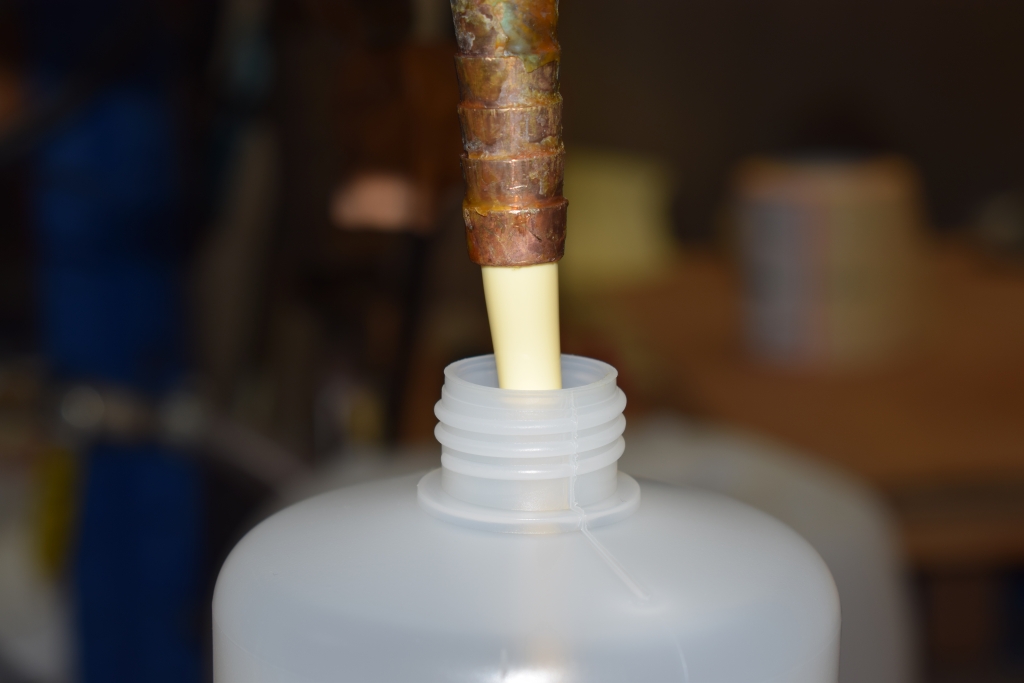Proper handling and storage of adhesives

Handling and storing adhesives correctly is crucial for maintaining bond strength and extending their shelf life, while reducing waste through the ability to reuse partial containers.
But with so many different types of adhesives on the market, it is hard to know where to start.
In this blog, we’ll provide expert advice on correct adhesive usage and storage, to ensure optimum adhesion, user safety and prevent environmental damage.
How to handle and store adhesives properly
Follow the MSDS
User safety is paramount. Any person involved in the handling of the product, whether it be mixing, application or disposal, should be familiar with the MSDS (Material Safety Data Sheet), supplied with each product. It is vital to focus on the Handling and Storage, Exposure and Personal Protective Equipment sections, as well as Toxicological information.
Read container warning label
It is crucial to adhere to the warning label on each container. The label details the hazards of that specific adhesive, what to do in case of exposure, as well as proper storage and disposal, to prevent user or environmental harm.
Review the Technical Data Sheet
The last document to review is the Technical Data Sheet (TDS) for the product, which has a safety, handling and storage section, in addition to physical properties of the product.
Each product should be reviewed thoroughly before use, and if in doubt, speak to the manufacturer to ensure safety.
Ensure quality and user safety
There are several precautions you should take as you handle and mix the adhesive to ensure quality and user safety.
Always refer to the TDS for the proper mix ratio, application solids and diluting solvent. Calculate the amount of adhesive needed for the job and only mix that amount, or only mix the amount that can be used in a normal 8-hour shift. Consider correct user handling, mixing and applying of the product, and also determine safe disposal of waste.
Safe storage
Storing adhesives correctly is essential, but can vary between different adhesive types. Some can be stored indefinitely without any special requirements, while others require refrigeration and will only last a few weeks.
If some adhesives are not stored correctly, they will dry out or cure, making it impossible to use. Structural adhesives may appear to function well when applied, but they will not achieve their specified bond strength.
Special safety measures are usually required for solvent-based adhesives and chemically reactive adhesives, due to the flammability and possible health hazards.
Typical storage requirements
These storage requirements are provided as a guide. Always check the manufacturer’s recommended storage for a specific adhesive or seek expert advice:
Water-based emulsion adhesives, like PVA, create a bond through water evaporation. To last for many years, they need to be kept in a sealed container that prevents air circulation or evaporation and stored between 5°C to 25°C.
For best results, two-part epoxy resin and hardener containers should be properly sealed and stored at room temperature. Avoid exposure to low temperatures, below about 13°C (55°F), or contaminating the resin container with hardener.
One-part epoxy resin requires heat to cure, so must be cold stored to delay curing. It typically has a shelf life of just a few weeks.
Cyanoacrylate adhesive, such as Superglue, cures when exposed to atmospheric humidity. The container should be tightly sealed and avoid exposure to air during storage.
Polyurethane adhesive also cures when exposed to humidity and should be stored in a tightly sealed container with as much air as possible squeezed out. Once opened, it has a lifespan of a few weeks.
Hot-melt adhesives are easy to store, as they are thermoplastics that can be melted, and should last for years with no special requirements.
Secure lids
To ensure the quality and longevity of the product, ensure lids are tightly secured to prevent evaporation and keep moisture out.
For moisture-sensitive urethane products, it’s crucial to cap the headspace of any partially used containers with dry air or an inert gas. This prevents water contamination that can compromise the product’s quality.
Use in cool, dry, well-ventilated areas
Adhesives should typically be kept in containers in a cool, dry, well-ventilated area, normally temperatures above 50°F and below 120°F.
For product-specific storing conditions, refer to the TDS, MSDS and warning label, or seek expert advice.
Check expiry dates
Always look closely at the expiry dates clearly marked on container labels. Do not use expired products and always practise FIFO (First In, First Out) to ensure the oldest product is used first before newer lots.
At Redwood, we take the time to understand your specific requirements before we recommend a reliable adhesive solution. Contact us on 023 9223 3310 or email sales@redwood-uk.com.
